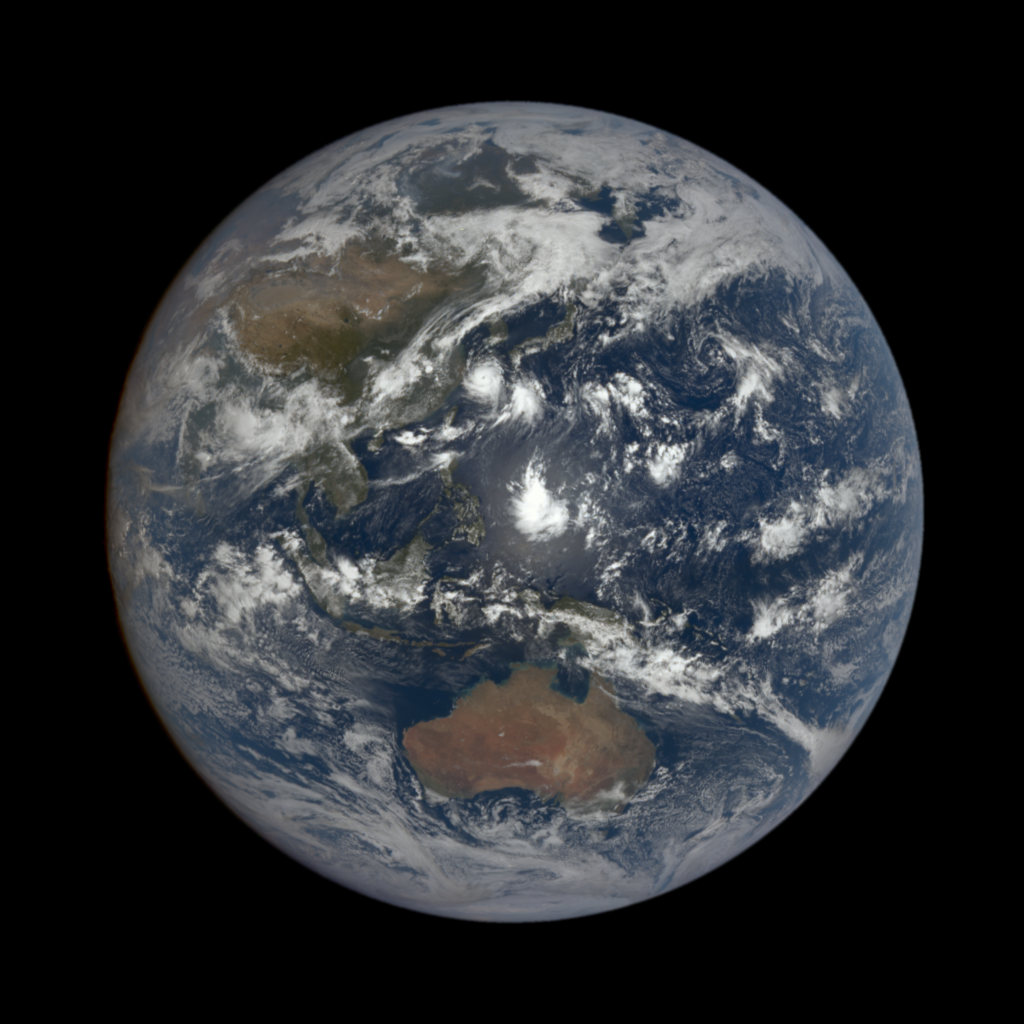Aug. 26, 2020 – NASA Sees Typhoon Bavi from One Million Miles Away
Typhoon Bavi is a large storm moving through the Yellow Sea. A NASA camera captured an image of the Northwestern Pacific Ocean that showed Bavi headed north.

NASA’s Earth Polychromatic Imaging Camera (EPIC), a four megapixel CCD camera and telescope aboard NOAA’s DSCOVR satellite in orbit 1 million miles from Earth, captured a full disk image of the Northwestern Pacific Ocean side of the globe. Typhoon Bavi was moving through the Yellow Sea on Aug. 25, 2020 when the image of it was captured.
EPIC maintains a constant view of the fully illuminated Earth as it rotates, providing scientific observations of ozone, vegetation, cloud height and aerosols in the atmosphere. DSCOVR is a partnership between NASA, NOAA and the U.S. Air Force with the primary objective of maintaining the nation’s real-time solar wind monitoring capabilities, which are critical to the accuracy and lead time of space weather alerts and forecasts from NOAA.
On Aug. 26 at 4 a.m. EDT (0900 UTC), Typhoon Bavi was located near latitude 32.4 degrees north and longitude 124.5 degrees east. That is about 169 nautical miles east-southeast of Shanghai, China. Bavi has maximum sustained winds near 100 knots (115 mph/185 kph) and was moving to the north-northwest.
Bavi is moving north and the Joint Typhoon Warning Center noted the storm has reached peak intensity. The storm is expected to weaken and start to become extra-tropical as it makes landfall in western North Korea and northeastern China.
For more information about DSCOVR, visit: http://www.nesdis.noaa.gov/DSCOVR
By Rob Gutro
NASA’s Goddard Space Flight Center
